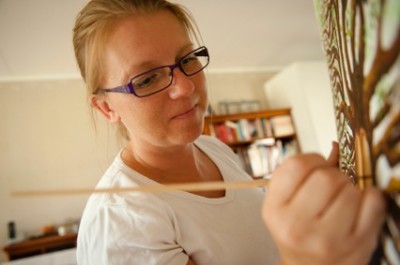How to Start Your Family Genealogy Quest
The most important quest you will ever take is the one in which you delve into the origins of your family history. Seeking to know more about your relatives and ancestors is a great way to learn more about who you are in this big world. The family tree also provides some fascinating hidden stories that may intrigue and surprise you. To begin your journey into the past you need a good starting point. There are several ways to gather information.
What Do You Know?
You already have some knowledge to use as a starter guide. Begin by recording details about your own life. Add your name to the family tree first. Include the names of your mother, father, spouse, children, cousins, aunts, uncles and grandparents. There may be some gaps due to lack of information. That’s okay. You are off to a great start.
Ask Family Members
Inform your relatives that you are working on the family genealogy and ask them for details about relatives they knew growing up. Many times an older relative will have vivid memories of their childhood days spent listening to elders tell stories.
This can give you lots of good material. Take detailed notes or bring a digital recorder with you to record the conversations.
Look for Vital Records
Put your detective hat on and search for important records such as birth certificates, marriage licenses, school reports, diaries, old letters, old photos, family bibles and treasure boxes. Some of these items may be stored away in the attic or basement. Get permission from relatives to look through their stored items. These searches can uncover some golden nuggets.
Check the U.S. Census Records
The Federal U.S. Census has decades of information about people from across the country. Every person that ever appeared on a census can be found in this massive database. Use the information you already know about your family and look for familiar names. Match the names to known residential areas and dates.
Download Family Tree Software
There are forms online available for easy download that let you fill in the names as you discover family connections. Forms allow you to keep track of all the different generations. You can also stay better organized and see where there are gaps to fill in.
Double Check Names
Names are tricky when doing genealogy research. Some names may sound similar but be spelled completely different. One incorrectly spelled name can lead you down the wrong path. You could end up including a person not related just by getting one letter wrong. So, be sure to double check the spelling of each name as you look through old records.
Include Your Sources
It is important that you record the source of all information included in your genealogy research. That means that you create a citation by writing down exactly where you got a relative’s specific information. For instance, if you found out from reading an old newspaper that your great grandfather held an important position, you would record the name and date of the paper.
Citations are a valuable resource that you may need to see again to double check facts.
Researching and recording your family history is time consuming, but ultimately a richly rewarding experience.
Derek is currently blogging for GTL DNA, a DNA diagnostics center that provides home DNA testing kits. He enjoys helping people with their genealogy and genetic testing questions.
Thank you,
Derek W.
Thanks to Derk W for this guest post.





